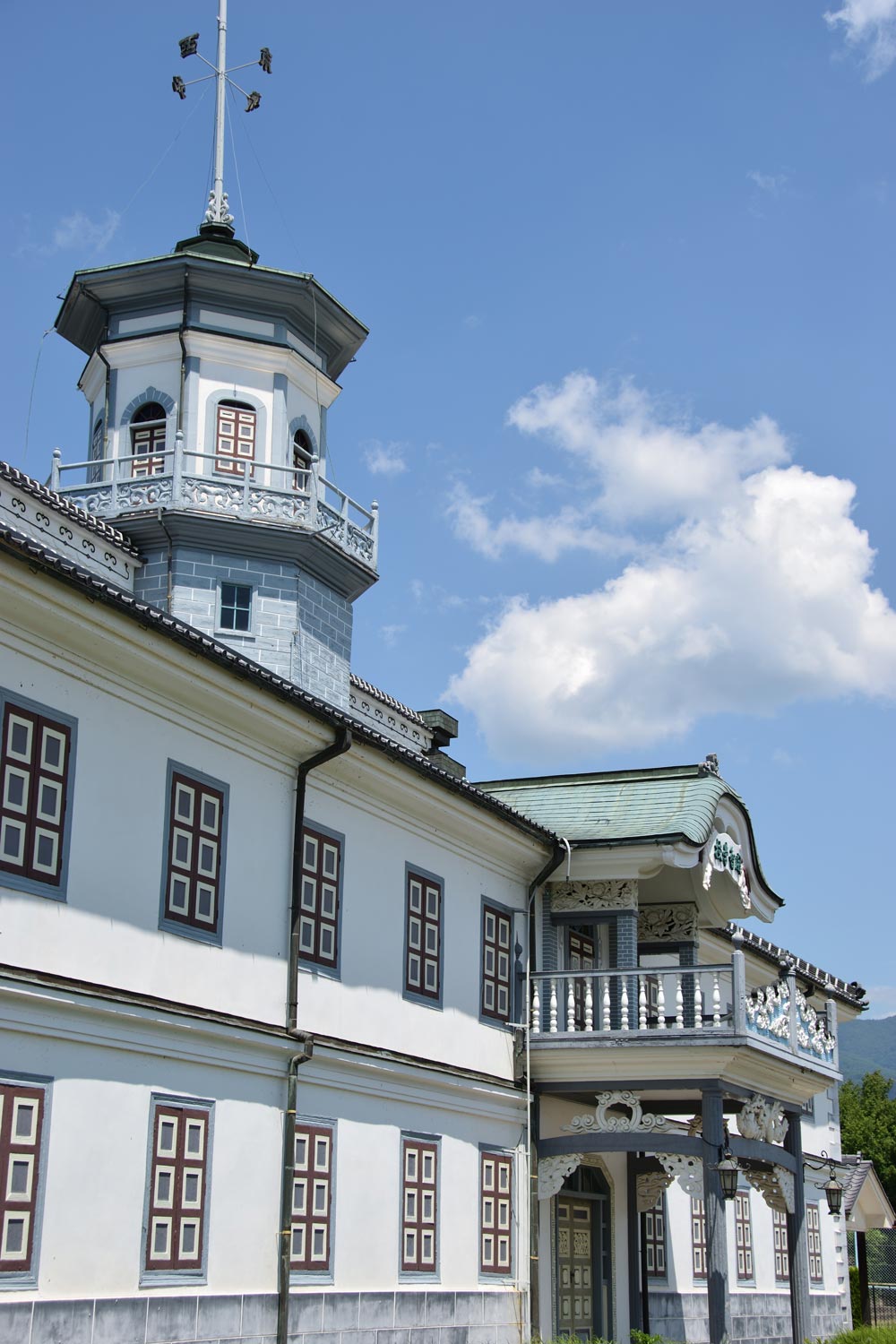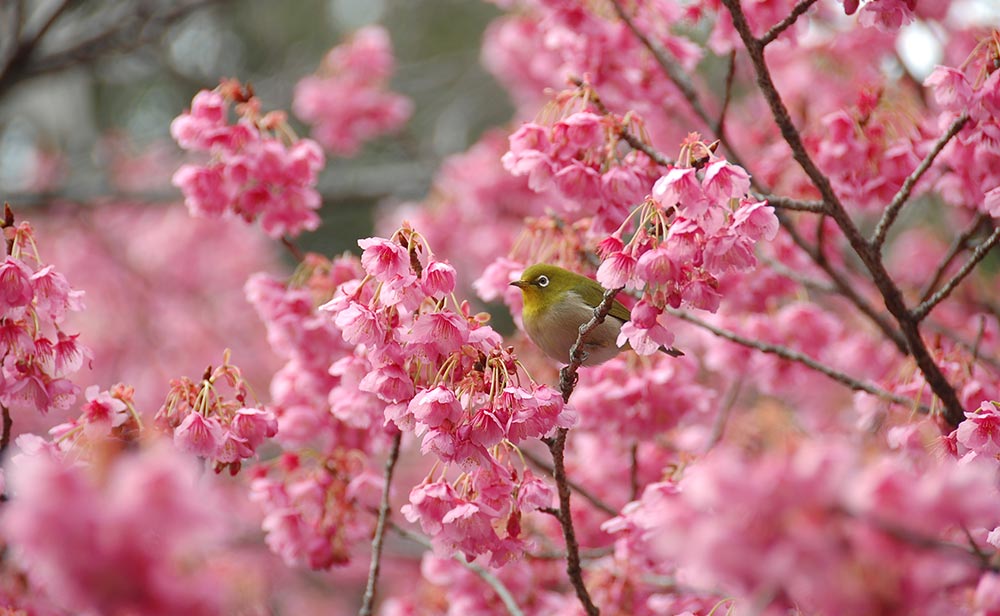NIKKOR - The Thousand and One Nights No.82

In search of the ultimate high-power zoom
AF-S DX VR Zoom-Nikkor 18-200mm f/3.5-5.6G IF-ED
This Tale looks at a best-selling DX-format lens released in the age of the D70s, the AF-S DX VR Zoom-Nikkor 18-200mm f/3.5-5.6G IF-ED.
by Kouichi Ohshita
In search of the ideal high-power zoom lens
The origins of high-power zoom lenses lie with the Zoom-Nikkor Auto 50-300mm f/4.5 (released in 1967) introduced with Tale 62 and the AI Zoom Nikkor 35-200mm f/3.5-4.5S (released in 1985) that Sato introduced with Tale 47. Once these lenses were released, other manufacturers also began developing lenses for the standard shooting range of 28 mm to 200 mm. Nikon countered with the AI AF Zoom-Nikkor 24-120mm f/3.5-5.6D (IF) introduced in Tale 58. The internal focusing (IF) system adopted for the 24-120mm resolved the greatest weakness of high-power zoom lenses—a long minimum focus distance—finally realizing an all-purpose lens for a wide variety of scenes. Since then, magnification has increased to include even 28-300 mm lenses offering 10x zoom.
However, these high-power zoom lenses were still one step away from ideal. They did not offer camera shake compensation (vibration reduction).
As you know, the effects of camera shake become more noticeable as the focal length increases, requiring users to use faster shutter speeds (1/focal length s). For example, when shooting at a focal length of 200 mm, a shutter speed of 1/200 s or faster must be used to prevent blur caused by camera shake. Similarly, a shutter speed of 1/300 s or faster must be used at a focal length of 300 mm, and so on. This means that hand-held shooting in the telephoto range is really only possible outdoors on clear, sunny days. The need to use a tripod in almost all other situations, however, eliminates much of the agility and mobility the high-power zoom lenses offer.
Nikon was one of the first still-camera manufacturers to develop technology that compensates for camera shake, releasing the Nikon Zoom 700VR, the world's first compact camera to be equipped with a vibration reduction (VR) mechanism, in 1994. This was followed by the release of the AI AF VR Zoom-Nikkor ED 80-400mm f/4.5-5.6D interchangeable lens in 2000. The success of these products encouraged Nikon to attempt the ideal high-power zoom lens that offered everything an all-purpose lens needs, including this vibration reduction (VR) technology and a Silent Wave Motor (SWM) for autofocusing. This was how development of the AF-S DX VR Zoom-Nikkor 18-200mm f/3.5-5.6G IF-ED began.
The AF-S DX VR Zoom-Nikkor 18-200mm f/3.5-5.6G IF-ED
Design of lens optics began around the summer of 2003 with three designers. Atsushi Shibayama served as the optical research leader, Takeshi Suzuki was the leader in charge of design and product launch, and Tomoki Ito was in charge of the practical work associated with lens design. Until the 1990s, it was common for a single optical designer to handle everything from design to product launch. That changed, however, with this lens for which a system that put multiple designers in charge of multiple products was established. Shibayama worked on a variety of lens designs for still cameras, from the AF Zoom Micro Nikkor ED 70-180mm f/4.5-5.6D introduced with Tale 18 to lenses for compact cameras like the Nikon Zoom 700VR mentioned above and the COOLPIX 900. Suzuki, the design leader, began his career designing lenses for TV cameras, but has since designed interchangeable lenses and lenses for IC steppers and scanners, and been responsible for the launch of products manufactured at Tochigi Nikon Corporation. He was also my boss until very recently. Ito was still young at the time, making his debut with the AF-S DX VR Zoom-Nikkor 18-200mm f/3.5-5.6G IF-ED. This is a good example of Nikon's tradition of putting young designers in charge of the most difficult lenses.
The design goals set for this lens were to achieve a high-performance, high-power zoom lens that covered the full standard 18-55 mm and telephoto 55-200 mm ranges of focal lengths, with a size and weight that could easily be carried, at an affordable price. It would be equipped with powerful vibration reduction and an SWM, and be available with a size and price similar to that of the popular AF-S VR Zoom-Nikkor 24-120mm f/3.5-5.6G IF-ED for film cameras. It took approximately six months to design the lens, and trial production began in the spring of 2004. Prototype performance, however, was not very good. Some time was required to adjust the lens barrel, so prototype testing was not completed until around the end of the year. The issue with initial performance was lens sensitivity caused by the high-power zoom. However, Suzuki, the design leader, was very tenacious and resolved trial production issues for mass trial production, achieving a more complete lens. One of the driving forces behind the realization of this product was the wave optics aberration measurement technology used for the IC stepper and scanner lenses with which Suzuki had previously worked. In addition to linear (straight) travel, light also has a wave-like property. Light that passes through an ideal lens becomes a spherical wave that converges toward the image plane. However, if the surface precision and positioning of lens elements are not perfect, this light does not properly converge on the image plane and imaging performance suffers. Stable performance was achieved by developing a device that measures disturbances in the wavefront and adjusting lens elements according. After all of this effort, a production line was finally established at Nikon (Thailand) Co., Ltd., a factory that mass produces many Nikon products, in December of 2005. This wavefront measurement technology has also been used for subsequent products, contributing to the production of NIKKOR lenses.
Figure 1 shows how this lens was constructed.

This lens is a four-group zoom lens. The first group is a positive-power convex group, the second group a negative-power concave group, the third group a positive-power convex group, and the fourth group is also a positive-power convex group used for zooming. At the initial design stage, lens constructions utilizing five or more groups were considered, but the team finally settled on this four-group construction. This is because the number of cam cylinders used to move each group increases along with the number of groups, increasing the length of the lens in order to secure the necessary distance between groups at the maximum wide-angle and telephoto positions. Vibration is effectively corrected by shifting a doublet (compound lens) at the rear of the third group in a direction perpendicular to the optical axis. This mechanism was ultimately adopted after a thorough examination. The deciding factor was the suppression of peripheral image blur due to the perspective generated by wide-angle lenses.
The primary cause of camera shake is the horizontal and/or vertical tilting of the camera and lens. With wide-angle lenses, this tilting of the camera generates perspective that narrows in the direction of the tilt, causing the scene or subject to be distorted. To evenly suppress camera shake throughout the frame, distortion must be generated by shifting the VR doublet so as to reverse this distortion at the edges of the frame. The most effective way to suppress peripheral blur caused by camera shake was by positioning this doublet at the rear of the third lens group. However, there was one problem. When the doublet shifted, the overall imaging performance suffered. This issue was resolved by adopting an aspherical doublet, which effectively suppressed any drop in image quality when VR was operating.
Even when you hold the lens, look through the camera's viewfinder, and intentionally shake it a little to create some blurring, very little shake is visible in the viewfinder display and the subject seems to be locked at its position in the frame. In addition to the fact that this lens supports superior performance from the wide-angle 18 mm to the telephoto 200 mm focal lengths, the effectiveness of its VR mechanism is an important feature of this lens. This is how the designers were able to meet their target range of focal lengths (18-200 mm) in a lens with the same size as the AF-S 24-120mm.
Lens rendering
As always, let's take a look at the rendering characteristics of this lens with actual images. These sample images were captured with cameras available at the time this lens was released (D50, D40), as well as with a newer camera (D3300). Please note the difference in resolution between the 6-megapixel D50 and D40, and the 24-megapixel D3300.

Captured using the D50 w/ the AF-S DX VR Zoom-Nikkor 18-200mm f/3.5-5.6G IF-ED at 18 mm, f/3.5, 1/13 s, ISO 1600, processed in-camera

Captured using the D3300 w/ the AF-S DX VR Zoom-Nikkor 18-200mm f/3.5-5.6G IF-ED at 18 mm, f/8, 1/125 s, ISO 100, processed with NX Studio
Sample image 1 was captured at the maximum wide-angle position of 18 mm and maximum aperture. One of the primary features of this lens is its powerful vibration reduction (VR) function. This image was captured while trying out the lens shortly after I purchased it. Combined with the superior high-sensitivity performance of the D50, the lens delivered a wonderful image with no blurring despite the fact I was holding the camera when I took the picture. This memorable photo made me feel certain I could capture any scene with this lens. Even at maximum aperture, the lack of sagittal coma flare is also noticeable due to an abundance of ambient light at frame peripheries. On the other hand, if you look at the yellow lights at the edges of the frame, you can see that they are separated into red and yellow spots. This is the result of a small amount of remaining lateral chromatic aberration.
Sample image 2 is a distant landscape that was also captured at the 18 mm wide-angle position. I used the D3300 and an aperture setting of f/8 for this shot. There should be some barrel distortion at the wide-angle position, but it is not really noticeable in this photo because there is no long, straight object at the edges of the frame. As indicated with Sample image 1, chromatic aberration is quite noticeable along the railing at the edge of the frame. The D3300 is equipped with auto distortion control and a function that corrects lateral chromatic aberration, but I did not apply these functions to any of the sample images used in this Tale.

Captured using the D3300 w/ the AF-S DX VR Zoom-Nikkor 18-200mm f/3.5-5.6G IF-ED at 24 mm, f/4.5, 1/500 s, ISO 100, processed with NX Studio

Captured using the D3300 w/ the AF-S DX VR Zoom-Nikkor 18-200mm f/3.5-5.6G IF-ED at 35 mm, f/8, 1/400 s, ISO 100, processed with NX Studio
Sample image 3 was captured with the D3300 at the 24 mm focal length with the aperture set to f/4.5. With this lens, the 24 mm focal length is where the least distortion occurs and the best balance in terms of performance can be achieved. I captured this shot from a close distance of less than one meter, but rendering of the flowers that were the subject for this photo is sharp and clear. However, flowers and leaves near the edges of the frame are somewhat affected by flare due to coma at frame peripheries. This coma also forms edges around bokeh for some unique blur characteristics.
Sample image 4 might be considered a distant landscape photo captured with the D3300 at the 35 mm focal length with the aperture set to f/8. Rendering at 35 mm is very similar to that at 24 mm, but there is a major shift in distortion between the two focal lengths. 35 mm exhibits the most pincushion distortion in the lens' range of focal lengths. Pincushion distortion is visible from the 35 mm focal length to the maximum telephoto focal length, but as the angle of view narrows at longer focal lengths, the distortion gradually decreases. This distortion can be seen in the bricks and window frames on the building's ground floor. If distortion is a concern, try enabling the camera's [Auto distortion control] function. In addition, the flare that was visible at the edges of the frame in Sample image 2 has been eliminated by stopping down the aperture to f/8 for sharp and clear rendering.

Captured using the D3300 w/ the AF-S DX VR Zoom-Nikkor 18-200mm f/3.5-5.6G IF-ED at 56 mm, f/5, 1/1000 s, ISO 100, processed with NX Studio

Captured using the D3300 w/ the AF-S DX VR Zoom-Nikkor 18-200mm f/3.5-5.6G IF-ED at 95 mm, f/5.3, 1/500 s, ISO 100, processed with NX Studio
Sample image 5 is a picture of a lotus flower that was captured with the D3300 at the 56 mm focal length with the aperture set to f/5. Coma at the edges of the frame decreases at this focal length, enabling capture of an image in which the main lotus flower is sharp, and background bokeh is soft.
Sample image 6 is a picture of tiger lilies that was captured at the 95 mm focal length with the aperture set to f/5.3. At a focal length near 100 mm, coma starts to become noticeable again, so the flowers at bottom right and buds at the top of the frame exhibit some flare. Both axial and lateral chromatic aberration are best controlled at focal lengths of around 100 mm, so no color fringing is visible.

Captured using the D3300 w/ the AF-S DX VR Zoom-Nikkor 18-200mm f/3.5-5.6G IF-ED at 135 mm, f/5.6, 1/250 s, ISO 200, processed with NX Studio

Captured using the D40 w/ the AF-S DX VR Zoom-Nikkor 18-200mm f/3.5-5.6G IF-ED at 200 mm, f/5.6, 1/200 s, ISO 200, processed in-camera
Sample image 7 is a photo of lilies that was captured with the D3300 at the 135 mm focal length with the aperture set to f/5.6. At focal lengths longer than 70 mm, spherical aberration gradually increases as the shooting distance decreases due to insufficient correction, and the image plane at the edges of the frame tends to move farther away. Therefore, rendering appears softer overall compared to that in Sample image 6, which was shot from a greater distance. On the telephoto end, the effects of the ED glass elements also become noticeable with little axial and lateral chromatic aberrations, but as lateral chromatic aberration becomes more noticeable as the shooting distance decreases, the petal at the top of the frame acquires a blue fringe.
Sample image 8 is a photo of a Japanese white-eye in a cherry tree in full bloom captured with the D40 at the maximum telephoto position of 200 mm with the aperture set to f/5.6. Japanese white-eyes are smaller than sparrows, but it is easy to get relatively close to them in the early spring as they search for nectar from the plum and cherry blossoms. The maximum telephoto position on this lens allows for quite large reproduction of these tiny birds. For full-scale bird photography, a long lens with a focal length of 400 mm to 600 mm (equivalent in 35mm [135] format) would be best, but as this lens supports an actual focal length of 300 mm with conversion to 35mm format, it is good for photographing waterfowls that pass the winter in local parks. This is one of the true pleasures of a high-power zoom lens that cannot be experienced with a general standard zoom lens.

Captured using the D3300 w/ the AF-S DX VR Zoom-Nikkor 18-200mm f/3.5-5.6G IF-ED at 200 mm, f/5.6, 1/200 s, ISO 200, processed with NX Studio
Sample image 9 is a close-up of basil flowers captured at 200 mm and maximum aperture very near the minimum focus distance. As I explained with Sample image 7, spherical aberration is insufficiently corrected with shooting at the maximum telephoto position near the minimum focus distance. Therefore flare that seems to form a thin veil over the flowers at the center of the frame is visible. For sharper images, I recommend stopping down the aperture to f/11. Color fringing caused by lateral chromatic aberration is also visible, but probably would not be so noticeable in everyday shots because lateral chromatic aberration compensation is automatically applied in-camera.
The perfect travel lens
Released in December of 2005, this lens was an immediate success that far exceeded our expectations. There were so many back orders for the lens that the factory (Nikon Thailand) could barely keep up with production, so assembly was hastily transferred to Tochigi Nikon Corporation. Even I ordered mine to use with my D50 as soon as it was announced, but didn't actually receive it until the end of the year. Once I began using the lens, I was thrilled with how easy it is to use. With support for a zoom ratio that nearly covers the entirety of the most popular range of focal lengths (wide-angle 27 mm to telephoto 300 mm) and powerful VR, it is a very versatile lens that enables hand-held shooting of almost any scene or subject. For these reasons, it succeeded in being the main lens for DX-format cameras for many years. It's also really fun to use. Until I used this lens, I thought one that covered the 28 mm to 100 mm range of focal lengths was sufficient for traveling. However, on my trips I would see things like rare birds and animals or flowers blooming just out of reach, which made me think a 300 mm telephoto lens would immediately increase the variety in my photos.
Four years after this lens was released, it was reborn as the AF-S DX NIKKOR 18-200mm f/3.5-5.6G ED VR II with a zoom lock switch, and continued to be one of the favorite lenses for many users. The designers' desire to pursue the ideal was then inherited by the AF-S DX NIKKOR 18-300mm f/3.5-5.6G ED VR (released in 2012) and the AF-S DX NIKKOR 18-300mm f/3.5-6.3G ED VR (released in 2014).

NIKKOR - The Thousand and One Nights
The history of Nikon cameras is also that of NIKKOR lenses. This serial story features fascinating tales of lens design and manufacture.

